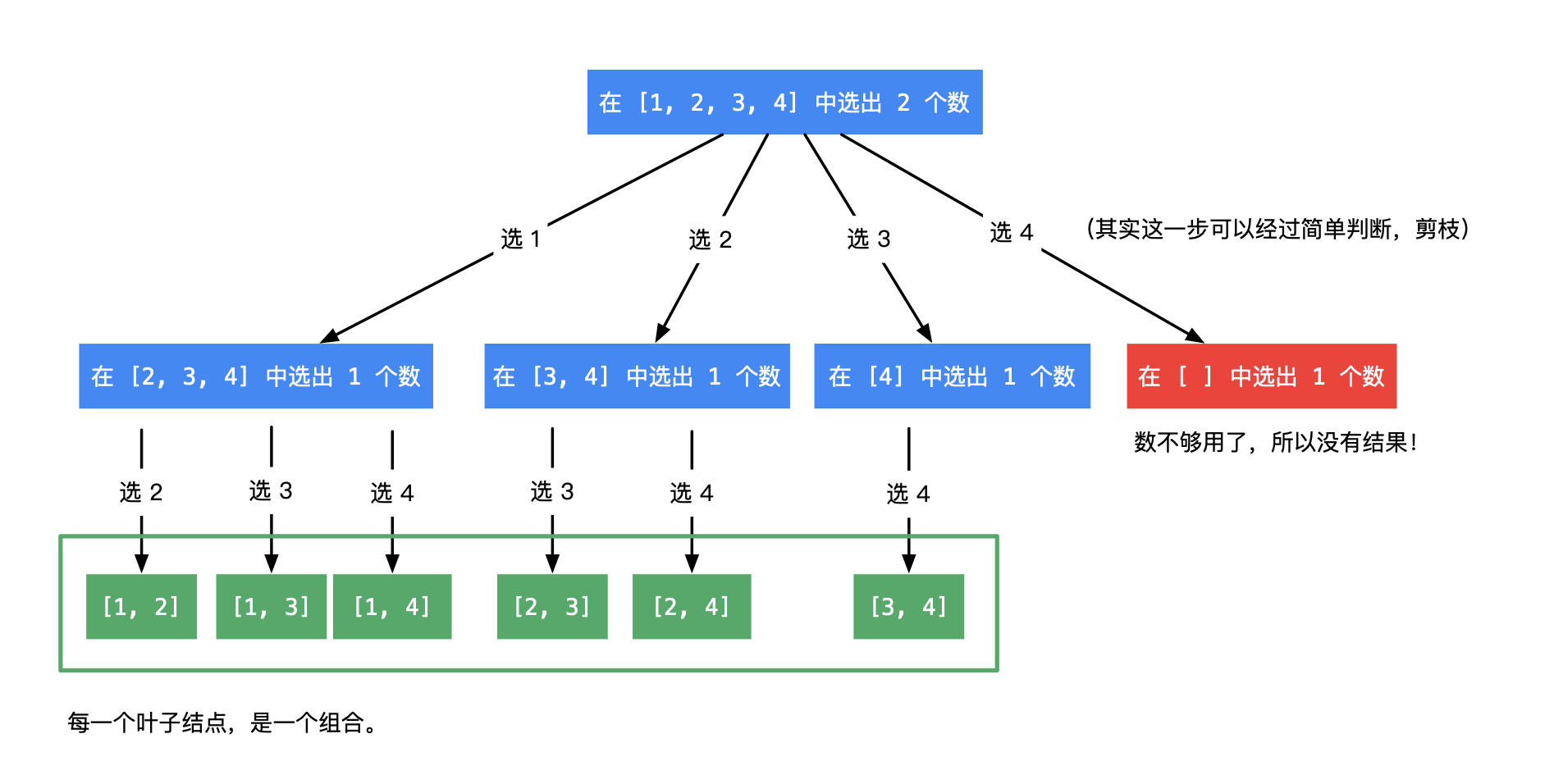Given two integers n and k, return all possible combinations of k numbers out of the range [1, n].
You may return the answer in any order.
Example 1:
Input: n = 4, k = 2 Output: [ [2,4], [3,4], [2,3], [1,2], [1,3], [1,4], ]
Example 2:
Input: n = 1, k = 1 Output: [[1]]
Constraints:
1 <= n <= 201 <= k <= n
组合。
题意是给一个数字 N 和一个数字 K,请你返回 1 ... n 中所有可能的 k 个数的组合。
分享一个写的很好的帖子。依然是 backtracking 类的题目,注意这里 N 的下限是从 1 开始。同时这个题又规定了 combination 的数字个数只能为 K 个所以 helper 函数的退出条件是 K == 0。
题目为什么会意识到是 backtracking 类型是因为需要寻找全部/多种组合,这种需要试探所有可能性的题会比较偏向 DFS/backtracking。为了避免结果的重复或者漏解,我们可能需要对 input 先做排序,但是这道题因为我们一会遍历的时候是从 1 往 N 走的,实现了自行有序,所以无需排序。一些关于字符串排列组合的题可能就需要排序了。
时间O(n^min(k, n - k))
空间O(n)
Java实现
1 class Solution { 2 public List<List<Integer>> combine(int n, int k) { 3 List<List<Integer>> res = new ArrayList<>(); 4 helper(res, new ArrayList<>(), n, k, 1); 5 return res; 6 } 7 8 private void helper(List<List<Integer>> res, List<Integer> list, int n, int k, int start) { 9 // 退出条件,当res里的个数满足K了,就加入结果集 10 if (k == 0) { 11 res.add(new ArrayList<>(list)); 12 return; 13 } 14 // 选取一个数字作为组合的第一个数字,直到N 15 for (int i = start; i <= n; i++) { 16 list.add(i); 17 // 递归的下一层里面K就减1,但是同时开始的index也需要 + 1 18 helper(res, list, n, k - 1, i + 1); 19 list.remove(list.size() - 1); 20 } 21 } 22 }
同时我附上这个截图,根据起点画出的二叉树对于解决这个问题很有帮助。

相关题目